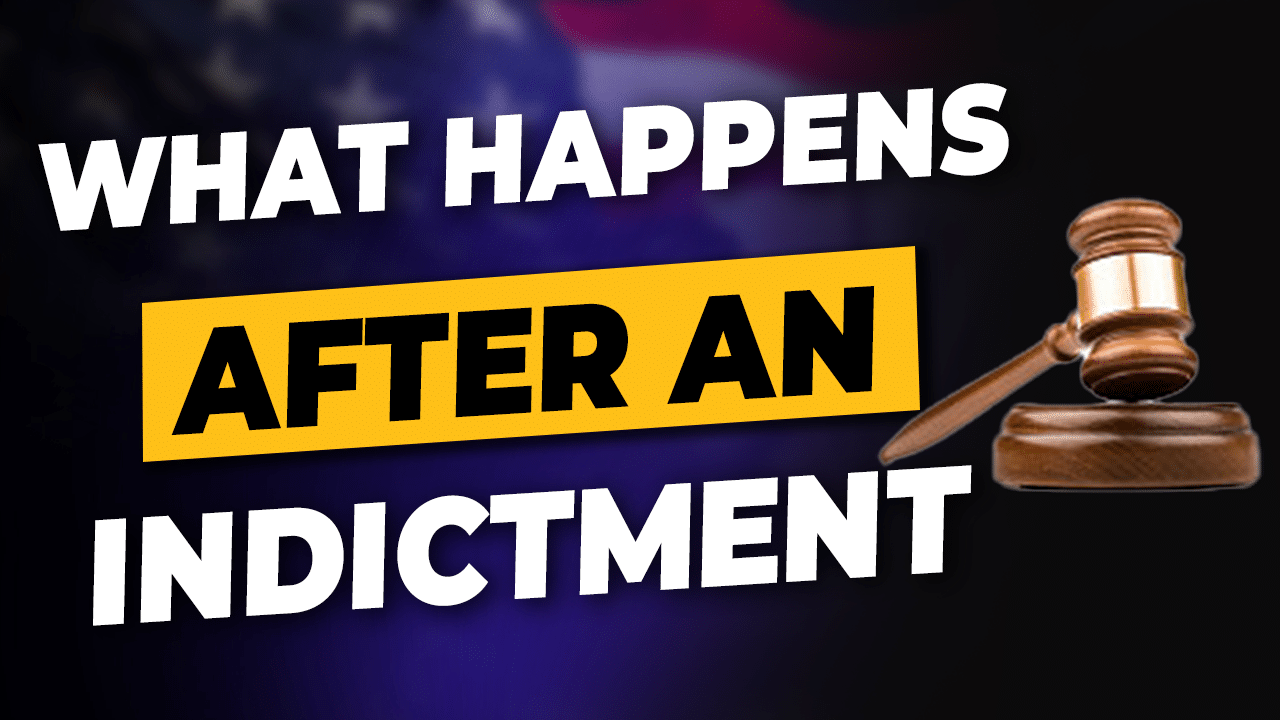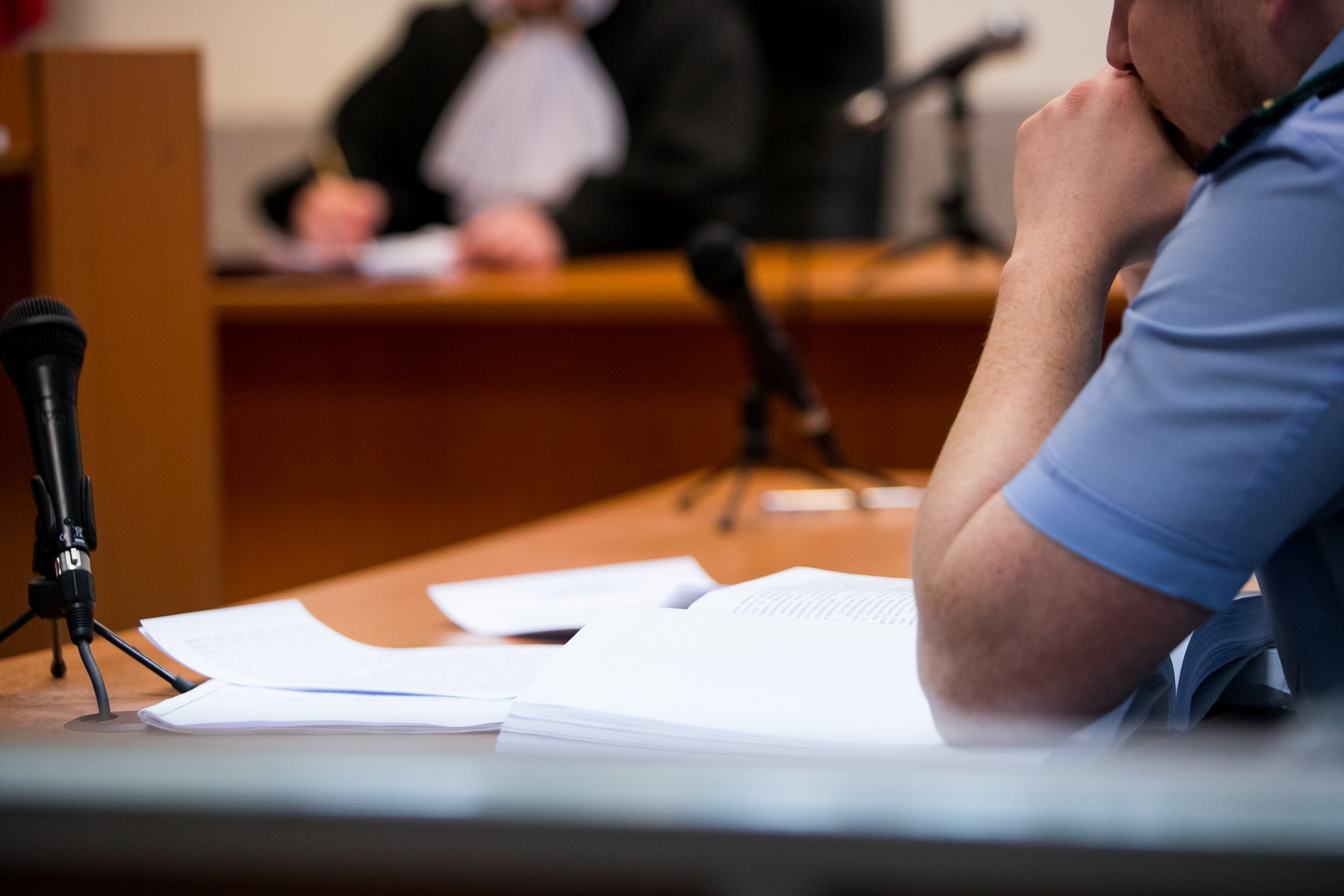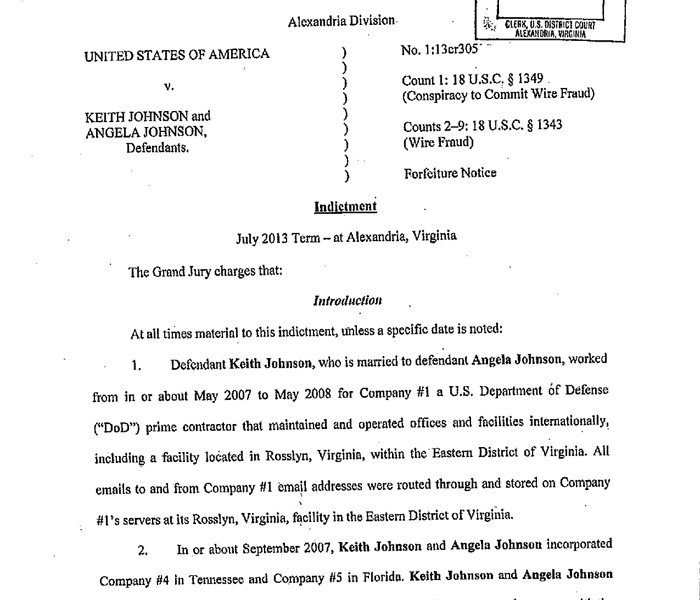What Happens After Grand Jury Indictment: Next Steps
After a grand jury indictment, the case proceeds to trial or plea negotiations. The defendant is arraigned on the charges.
A grand jury indictment marks the formal charging of a person with a crime. It occurs after the grand jury reviews evidence and determines that there is enough to proceed with a trial. Following the indictment, the defendant is arraigned, where they enter a plea.
This pivotal stage in the criminal justice process sets the wheels in motion for the legal proceedings to unfold, ultimately leading to a trial or potential plea agreement. Understanding what happens after a grand jury indictment provides insight into the progression of a criminal case and the defendant’s next steps in the legal journey.
Introduction To Grand Jury Indictments
Role Of The Grand Jury
The grand jury is responsible for determining if there is enough evidence to issue an indictment.
Criteria For Issuing An Indictment
For an indictment to be issued, the grand jury must find probable cause that a crime was committed.
The Indictment Process
Following a grand jury indictment, the formal criminal charge, or “true bill,” is issued if evidence justifies prosecution. The defendant then proceeds to an arraignment in court to enter a plea.
Gathering Evidence
The indictment process begins with the gathering of evidence. This evidence can come from a variety of sources, including witness testimony, physical evidence, and documentary evidence. The prosecutor will present this evidence to the grand jury in order to support their case against the defendant. It is important to note that the grand jury is not tasked with determining guilt or innocence, but rather whether there is enough evidence to proceed with a criminal trial.Deliberation And Voting
Once all of the evidence has been presented, the grand jury will deliberate and vote on whether to issue an indictment. This deliberation is conducted in secret, and the prosecutor is not present during the proceedings. The grand jury will consider the evidence presented and determine whether there is probable cause to believe that the defendant has committed a crime. If a majority of the grand jurors believe that there is sufficient evidence, they will vote to issue an indictment. In conclusion, the indictment process is a crucial step in the criminal justice system. It allows for the grand jury to review the evidence presented by the prosecutor and determine whether there is enough evidence to proceed with a criminal trial. The gathering of evidence and the deliberation and voting process are key components of the indictment process. It is important to note that an indictment does not equate to guilt, but rather the formal charge against the defendant.Post-indictment: Initial Steps
After a grand jury indictment, the next steps typically involve the arraignment hearing, where the defendant appears in court and enters a plea. This is usually followed by pre-trial motions and discovery, as the legal process moves forward towards the trial phase.
Filing The Indictment
Once the grand jury has considered the evidence and decided that there is sufficient cause for the prosecution to proceed, they file the indictment. The indictment formally charges the accused with the specific criminal offenses based on the evidence presented.
Notification Of The Accused
Following the filing of the indictment, the accused is notified about the charges brought against them. This notification is typically done through the service of a summons or a warrant, informing the accused of their upcoming court appearance to answer the charges.
Arraignment Proceedings
After a grand jury indictment, the next step in the legal process is the arraignment proceedings. This is a crucial phase where the defendant appears in court to enter a plea and the formal charges are presented. Understanding the purpose of arraignment and the possible pleas by the defendant is essential to grasp the significance of this stage in the criminal justice system.
Purpose Of Arraignment
Arraignment serves as the formal reading of the charges against the defendant. It provides an opportunity for the court to confirm the defendant’s identity and address any concerns regarding legal representation. Additionally, the judge may set bail or determine if the defendant should remain in custody pending trial.
Possible Pleas By The Defendant
During arraignment, the defendant can enter one of the following pleas: guilty, not guilty, or nolo contendere (no contest). A guilty plea indicates acceptance of the charges, while a not guilty plea contests the allegations. The nolo contendere plea means the defendant neither admits nor denies the charges but accepts the punishment.
Bail And Pretrial Release
When a grand jury returns an indictment, the next steps involve bail and pretrial release. These are critical aspects that determine the defendant’s freedom before the trial. Understanding the process of determining bail amount and conditions for pretrial release is essential for both the defendant and their legal team.
Determining Bail Amount
Upon indictment, the court assesses the bail amount based on various factors such as the severity of the charges, the defendant’s criminal history, flight risk, and community ties. The judge takes into account the potential danger the defendant poses to the community and the likelihood of their appearance at trial.
Conditions For Pretrial Release
Pretrial release conditions are set to ensure the defendant’s compliance with the law and their appearance at trial. These conditions may include regular check-ins with a pretrial services officer, travel restrictions, electronic monitoring, and drug testing. The court may also require the defendant to surrender their passport and restrict their access to firearms.
Pretrial Motions And Hearings
Once a grand jury has issued an indictment, the legal process moves into the pretrial phase. This phase involves various motions and hearings that set the stage for the upcoming trial. Pretrial motions and hearings play a crucial role in shaping the direction and parameters of the trial proceedings.
Common Pretrial Motions
Before the trial begins, both the defense and the prosecution may file pretrial motions to address specific legal issues or to request certain actions from the court. These motions serve to clarify legal matters, suppress evidence, or dismiss the case altogether. Some common pretrial motions include:
- Motion to Suppress Evidence
- Motion to Dismiss
- Motion for Change of Venue
- Motion for Discovery
- Motion in Limine
Purpose Of Pretrial Hearings
Pretrial hearings are conducted to address legal issues, resolve disputes, and make decisions that will impact the trial. These hearings provide an opportunity for the judge to consider the admissibility of evidence, hear arguments from both parties, and establish the framework for the upcoming trial. The primary purposes of pretrial hearings include:
- Addressing Legal Motions
- Setting Trial Dates
- Resolving Evidentiary Issues
- Discussing Plea Bargains
- Determining Trial Procedures
The Role Of Defense And Prosecution
After a grand jury indictment, the prosecution proceeds with formal criminal charges, while the defense prepares to contest the allegations. This marks the commencement of the legal process, leading towards arraignment and potentially a trial. Both sides engage in thorough preparation to present their cases effectively.
Defense Strategies Post-indictment
After the grand jury decides to issue an indictment, the defendant becomes aware of the charges and can begin to prepare their defense. The defense’s primary objective is to challenge the prosecution’s evidence and refute the charges against the defendant. One common strategy is to challenge the admissibility of evidence gathered during the investigation. The defense may argue that the evidence was obtained illegally or that it is not relevant to the case. In addition, the defense may also try to suppress any statements made by the defendant during the investigation. Another strategy is to negotiate a plea bargain with the prosecution. In exchange for a guilty plea, the defendant may receive a reduced sentence or have some charges dropped. However, this strategy is only appropriate in certain cases and must be carefully considered by the defense.Prosecution’s Preparation For Trial
Once the grand jury has issued an indictment, the prosecution begins preparing for trial. The prosecution’s objective is to prove the defendant’s guilt beyond a reasonable doubt. One key aspect of their preparation is to gather and organize evidence that supports their case. They may also interview witnesses and experts who can provide testimony during the trial. The prosecution will also prepare opening and closing statements that summarize their case and argue why the defendant is guilty of the charges. In addition, the prosecution will also anticipate and prepare for the defense’s strategies. They will review any evidence the defense plans to present and prepare rebuttal arguments. The prosecution must be ready to counter any arguments made by the defense and prove the defendant’s guilt to the jury. Overall, the role of the defense and prosecution after a grand jury indictment is to prepare for trial and present their case to the best of their ability. Both sides will use various strategies to achieve their objectives and must be prepared to adapt to the circumstances of the case.
Credit: prisonprofessors.com
Trial Preparation And Court Proceedings
After a grand jury indictment, the defendant is arraigned in court where they enter a plea. The next step is trial preparation, including gathering evidence and witness testimonies for court proceedings.
Jury Selection
During the trial preparation and court proceedings, one crucial aspect is the Jury Selection. This process involves choosing a panel of impartial individuals to serve as the jury for the trial.
Key Stages Of A Criminal Trial
Understanding the Key Stages of a Criminal Trial is essential. These stages include pre-trial motions, opening statements, witness testimony, cross-examination, closing arguments, and jury deliberation.
Possible Outcomes After Trial
After a grand jury indictment, the defendant faces arraignment in court. This is where they enter a plea of guilty, not guilty, or nolo contendere. The formal criminal charge, known as a true bill, is issued by the grand jury based on the evidence presented.
After a grand jury indictment, the legal process moves forward to trial. The trial presents various possible outcomes that can significantly impact the defendant’s future. Understanding these outcomes is crucial for all parties involved in the legal proceedings.Conviction Scenarios
In the event of a conviction, the defendant is found guilty of the charges brought against them. This outcome can result in imprisonment, fines, probation, or a combination of these penalties. The severity of the sentence depends on the nature and gravity of the crimes committed.Acquittal And Its Implications
An acquittal occurs when the defendant is found not guilty of the charges. This outcome typically ends the legal proceedings against the defendant. An acquittal can have far-reaching implications, including the defendant’s freedom and reputation being preserved. Other Possible Outcomes: – Mistrial: If the trial cannot reach a verdict due to a hung jury or procedural errors, a mistrial may be declared. – Appeal: Both the prosecution and defense have the right to appeal the verdict or legal errors that occurred during the trial. – Retrial: In cases of mistrial or successful appeals, the defendant may face a new trial to determine their guilt or innocence. Understanding the possible outcomes after a trial is essential for both defendants and the prosecution as they navigate the complexities of the legal system.
Credit: www.mclarenlawfirm.com

Credit: www.reddit.com
Frequently Asked Questions
Is An Indictment Returned By A Grand Jury?
Yes, an indictment is returned by a grand jury after deciding if there is enough evidence for a formal criminal charge.
Which Step In A Criminal Procedure Comes After An Indictment By A Grand Jury Quizlet?
After an indictment by a grand jury, the defendant appears in court for an arraignment where they enter a plea of guilty, not guilty, or nolo contendere. This is the next step in the criminal procedure.
How Long Does Texas Have To Indict You?
Texas has no specific time limit to indict you for a crime. The process can vary.
How Long Does It Take To Get A Court Date For A Felony In Texas?
The time to get a court date for a felony in Texas varies. It can range from a few days to several months, depending on the custody status of the defendant.
Conclusion
After a grand jury indictment, the defendant faces arraignment in court, where they enter a plea. The indictment marks the formal criminal charge based on evidence presented. This crucial step sets the stage for the legal proceedings to follow. It’s a pivotal moment in the criminal justice process.

